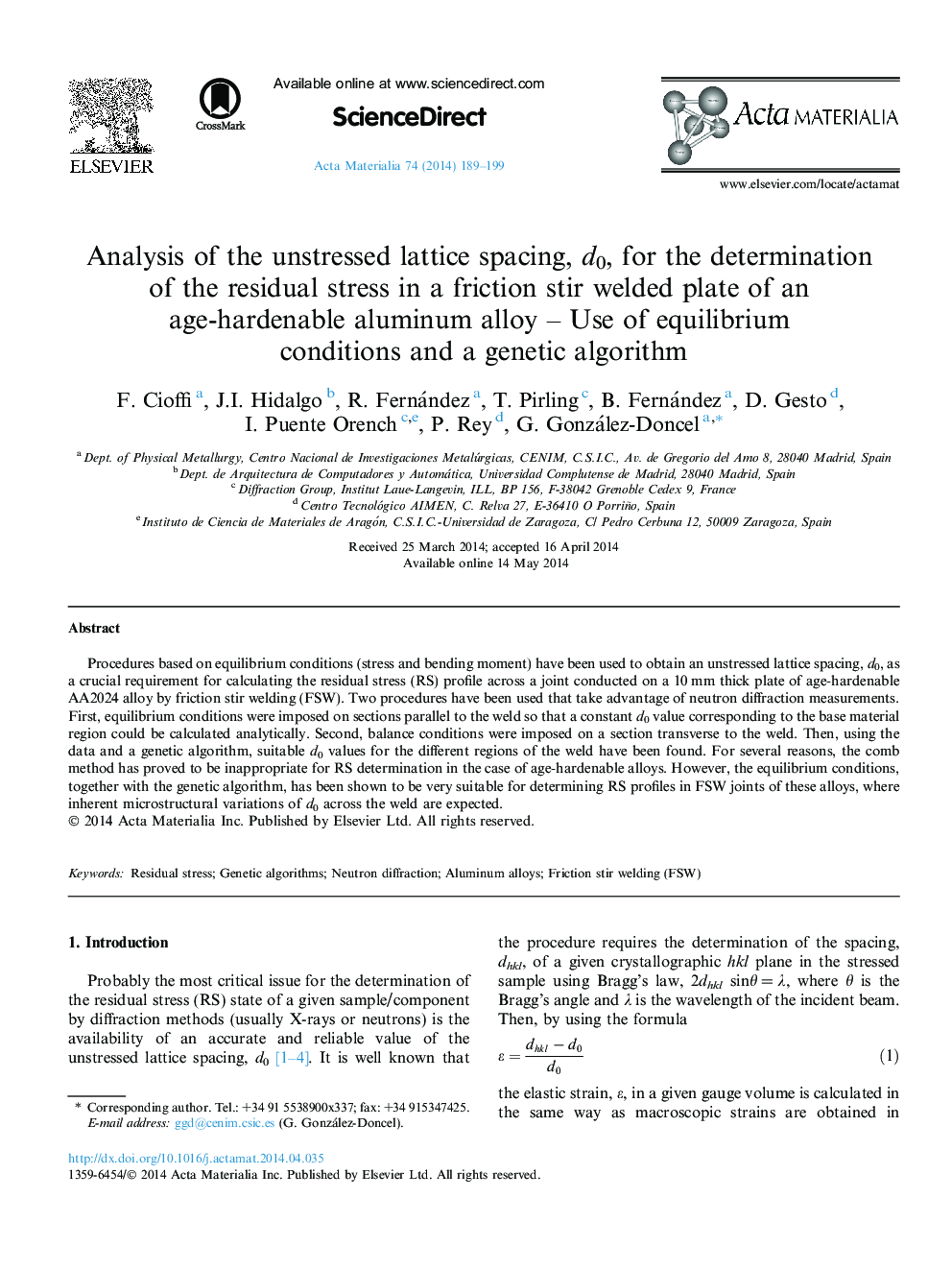| Article ID | Journal | Published Year | Pages | File Type |
|---|---|---|---|---|
| 7881716 | Acta Materialia | 2014 | 11 Pages |
Abstract
Procedures based on equilibrium conditions (stress and bending moment) have been used to obtain an unstressed lattice spacing, d0, as a crucial requirement for calculating the residual stress (RS) profile across a joint conducted on a 10Â mm thick plate of age-hardenable AA2024 alloy by friction stir welding (FSW). Two procedures have been used that take advantage of neutron diffraction measurements. First, equilibrium conditions were imposed on sections parallel to the weld so that a constant d0 value corresponding to the base material region could be calculated analytically. Second, balance conditions were imposed on a section transverse to the weld. Then, using the data and a genetic algorithm, suitable d0 values for the different regions of the weld have been found. For several reasons, the comb method has proved to be inappropriate for RS determination in the case of age-hardenable alloys. However, the equilibrium conditions, together with the genetic algorithm, has been shown to be very suitable for determining RS profiles in FSW joints of these alloys, where inherent microstructural variations of d0 across the weld are expected.
Keywords
Related Topics
Physical Sciences and Engineering
Materials Science
Ceramics and Composites
Authors
F. Cioffi, J.I. Hidalgo, R. Fernández, T. Pirling, B. Fernández, D. Gesto, I. Puente Orench, P. Rey, G. González-Doncel,
